IN the 1930s, flying boats became the largest, most comfortable passenger planes in the world. The spacious planes had hulls shaped like boats and floats under their wings. They could land and take off on the sea, as well as lakes and rivers.
In a time when aircraft engines were still unreliable, people thought flying boats were a safer wray to travel over the ocean.
Pan American Airlines called its flying boats clippers, alter the speedy sailing ships. They carried passengers to exotic destinations, such as the Far East and South America, at a time when few airports existed.
Flying boats were luxury cralt designed to compete with ocean liners. The biggest was Pan Am s Boeing 314 Clipper. A 106-foot-long-giant, it carried passengers at 174 miles an hour to Hong Kong or other cites in unequaled comfort. Yet as airports were built all over the world, flying boats were replaced by land aircralt.




 When a flying boat landed on water, it tied up di a mooring buoy or simply dropped its own anchor, like a ship.
When a flying boat landed on water, it tied up di a mooring buoy or simply dropped its own anchor, like a ship.



* Traveling the World
The cover of a 1930s Pan American timetable, in the Museum collection, shows routes spanning much of the globe. These routes opened the world to air travelers.
У China Clipper
The Martin M -130, the"China Clipper," rests at a mooring station off Manila after her first transpacific flight on November 29,1935.The streamlined plane flew from San Francisco to Manila in 59 hours.
 ERY different from the flimsy biplanes of World War I, the fighter aircraft of World War II were tough, fast, and efficient. Aircraft had now become a primary means of waging war. Two nations, Germany and Japan, set out to dominate the world. In 1939, Nazi Germany began invading European countries. The German air force was called the Luftwaffe, or “air weapon.” Its Messerschmitt Bt 109 was a swift, fearsome fighter. More than 33,000 were produced.
ERY different from the flimsy biplanes of World War I, the fighter aircraft of World War II were tough, fast, and efficient. Aircraft had now become a primary means of waging war. Two nations, Germany and Japan, set out to dominate the world. In 1939, Nazi Germany began invading European countries. The German air force was called the Luftwaffe, or “air weapon.” Its Messerschmitt Bt 109 was a swift, fearsome fighter. More than 33,000 were produced.
German fighters and bombers terrorized Europe. Allied nations, including the United States, produced thousands of aircraft to light Germany and Japan. Fight eggs escorted bombers deep into enemy territory and battled in dogfights. Pilot skill was paramount. Spurred by war, aircraft advanced rapidly. Sleek new fighters flew at over 400 miles an hour and went 2,000 miles without refueling. By war’s end, the iirst
Combat Pilot

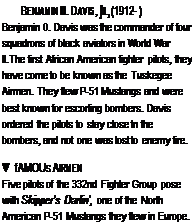

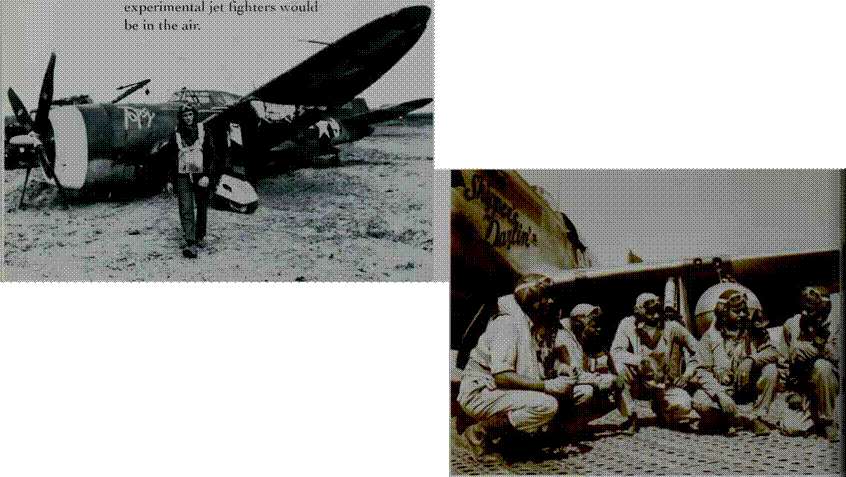
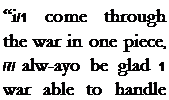 Wounded and dazed, pilot Quentin C. Aanenson poses with his P-47 Thunderbolt fighter plane, Topsy. Aanenson had just crash-landed on his base after being hit by "flak,"or antiaircraft fire, in a mission over Germany.
Wounded and dazed, pilot Quentin C. Aanenson poses with his P-47 Thunderbolt fighter plane, Topsy. Aanenson had just crash-landed on his base after being hit by "flak,"or antiaircraft fire, in a mission over Germany.


* Supermarine Spitfire
Britain’s most famous fighter, the Spitfire was fast and nimble and could outmarieuver the German Bf 109.This Spitfire in the Museum is a high-altitude version of the fighter, and could fly over
40,0 feet.


¥ Curtiss Р-і»о Warhawk
Lieutenant Donald Lopez stands with his P-40 Warhawk in 1943. Mow Deputy Director of the National Air and Space Museum, Lopez became an ace flying with the Fourteenth Air Force. They battled the Japanese in China.

North American P-31 Mustang
A pilot smiles inside his P-51 D Mustang. This U. S. fighter could fly at 440 miles an hour. It was fitted with a drop tank so it could fly extra miles to go deep inside Germany. Swastikas on the plane’s side represent German planes shot down.
► Messerschmitt Bf 109
Germany’s Messerschmitt Bf 109 was the main opponent of the P-51 Mustang and the British Spitfire. With a top speed of 385 miles an hour, it could swiftly climb, dive, and turn in dogfights.
 ? ScRAMBLt!
? ScRAMBLt!
British fighter pilots run to their Hawker Hurricane fighters to take off during the Battle of Britain. Though not as agile as the Spitfire, the sturdy Hurricane easily shot down large numbers of slower, low-flying German bombers.
|
‘Never… wao oo much owed by о о many to oo few. All heart,* go out to the fighter piloto, whooe brilliant actio no we, tee with out own eyeo day after day… ”
British Prime Minister Winston Churchill
|
|
< Observer Corps
British men and women volunteered as aircraft spotters in 1940. this chart shows how to identify various planes. Many Allies fought with the RAF. The poster at right helped recruit pilots for the Royal Australian Air force.
|
|
|
▼ "Achtung, Spitfire!"
German pilots warn each other as a Spitfire zooms in to attack. ! he agile "Spit"could quickly train its 8 machine guns in a deadly hail of bullets and tear apart an enemy
|
|
|
Fun Fact: Super Binoculars
|
|
|
During the Battle of Britain, the British relied on their coastal radar, called the Chain Home system. It could detect German planes 40 miles away. German pilots called this new radac"super binoculars."
|
|
|
|
|
ENQUIRE
IT
COUNCIL
CHAMBERS
|
|


THE United States produced thousands of bombers during World War II. Among the most famous was the Boeing B-17. Called the Flying Fortress, this plane lived up to its name. It could carry over 17,000 pounds of bombs, and was armed with 12 machine guns for defense against enemy fighters. Later U. S. bombers included the Boeing B-24 Liberator and the enormous B-29 Superfortress. Many bombers were destroyed by enemy fighters and antiaircraft guns early in the war. The use of fighter escorts helped bombers complete their missions. Later bombers, such as the B-29, could fly to high altitudes beyond the reach of most enemy fire.
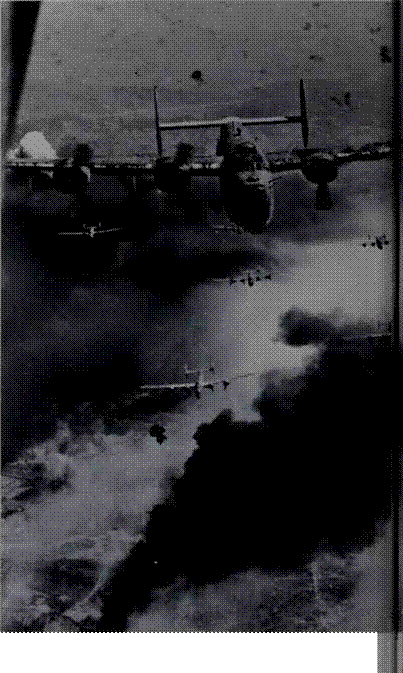 Bombers attacked in huge fleets of up to a thousand to knock out enemy luel bases, arms supplies, and transportation lines. Never before had aircraft been used to destroy on such a large scale.
Bombers attacked in huge fleets of up to a thousand to knock out enemy luel bases, arms supplies, and transportation lines. Never before had aircraft been used to destroy on such a large scale.




► Flak Bait
The nose section of Flak Bvit, a Martin B-26 Marauder bomber, is now in the National Air and Space Museum. Ihis plane flew 200 missions over Europe, more than any other Allied bomber. Over 1,000 patches cover holes made by antiaircraft tire, or"flak."
Inside Flak Bait
This interior view shows the radio and navigation station of Flak Bait. Visible through the door is the cockpit instrument panel. It was shattered by a German Bf 109 Messerschmitt shell in 1943.The wounded pilot managed to safely land the plane.
► The WASPs
Women pilots train to fly B-17 bombers at a flight school during the war. Known as the Women’s Airforce Service Pilots (WASPs), they transported military aircraft to war zones. They flew everything from fighters to heavy bombers. Over 30 were killed in service.
4 B-17 Waist Gunner
Inside a B-17 Flying Fortress, gunner Robert Taylor fires a 50-caliber machine gun to ward off attacking German fighters. He wears warm clothing and a metal-lined "flak apron" to protect against shell fire.
AFTER Japanese warplanes bombed the U. S. naval base at Pearl Harbor in 1941, the United States entered the war. During the next years, much of the war took place at sea. From 1941 to 1945, the L United States and Japan battled in the Pacific.
■ Their most powerful weapons were aircraft
carriers. Floating airfields, the huge ships known as "flattops” were 820 Feet long and carried up to 100 warplanes. Fighters and bombers took off and landed on their flat decks. The carriers allowed great mobility of air attack.
 In 1942, Japan launched an attack on Midway Island with four carriers. Navy dive bombers From three U. S. carriers surprised and attacked die Japanese fleet. They sank all four Japanese carriers. With the ships, Japan lost 250 planes and their most veteran pilots. This was a crippling blow that marked the turning point against Japan in the Pacific.
In 1942, Japan launched an attack on Midway Island with four carriers. Navy dive bombers From three U. S. carriers surprised and attacked die Japanese fleet. They sank all four Japanese carriers. With the ships, Japan lost 250 planes and their most veteran pilots. This was a crippling blow that marked the turning point against Japan in the Pacific.



Kamikaze
The Cherry Blossom, a Japanese Kugisho MXY7 Ohka kamikaze bomber, is today part of the Museum collection. Japanese kamikaze pilots flew these planes, filled with bombs, deliberately into Allied ships. They believed that suicide in such attacks was an honorable death.
Bullseye!
U. S. Navy Douglas Dauntless dive bombers bomb the Japanese aircraft carrier Akogl in this painting. The bombers sank this and three other Japanese carriers near Midway Island in 1942. Most of Japan’s most skilled pilots and their planes, plus 3,000 sailors, v/ere lost.
Cleared to Go
A signal officer aboard a U. S. carrier waves the takeoff flag for a Grumman Hellcat fighter. Carrier takeoffs and landings took great pilot skill. A net across the deck helped damaged planes returning from battle to skid safely to a stop.


![]()
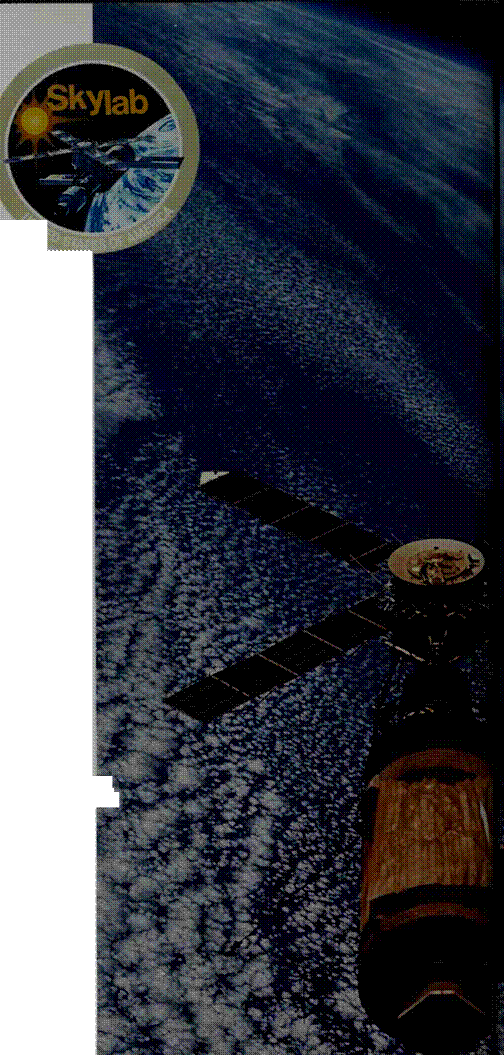 Dinner is Served
Dinner is Served

 N the 1970s, the United States and the Soviet Union began a new period of cooperation. They even agreed to launch a joint space mission, called the Apollo-Soyuz Test Project. In July 19/5, two manned spacecraft took off. One was an American Apollo capsule launched from Florida. The other, a Soyuz capsule, was launched Irom Kazakhstan in the Soviet Union. On July 17, the two capsules met in Earth orbit and successfully docked. They used a specially designed docking module. It lit to the Apollo on one end and to the Soyuz on the other end.
N the 1970s, the United States and the Soviet Union began a new period of cooperation. They even agreed to launch a joint space mission, called the Apollo-Soyuz Test Project. In July 19/5, two manned spacecraft took off. One was an American Apollo capsule launched from Florida. The other, a Soyuz capsule, was launched Irom Kazakhstan in the Soviet Union. On July 17, the two capsules met in Earth orbit and successfully docked. They used a specially designed docking module. It lit to the Apollo on one end and to the Soyuz on the other end.![]()
![]()

















 A toy monkey named "Maqqie" (left) rode in the Douglas World Cruiser Chicago on its long journey. The plane’s open cockpit (below) had few instruments, but a big steering wheel to control ailerons and elevators. Leather trim was to protect the pilot in a possible crash.
A toy monkey named "Maqqie" (left) rode in the Douglas World Cruiser Chicago on its long journey. The plane’s open cockpit (below) had few instruments, but a big steering wheel to control ailerons and elevators. Leather trim was to protect the pilot in a possible crash. * The (и к Або
* The (и к Або

 The diorama below, in the Museum collection, depicts the World Cruisers refueling in Seward, Alaska. At right, the planes sit on their pontoon floats, anchored off Sitka, Alaska. Soon after, the Seattle crashed into a mountain in fog.
The diorama below, in the Museum collection, depicts the World Cruisers refueling in Seward, Alaska. At right, the planes sit on their pontoon floats, anchored off Sitka, Alaska. Soon after, the Seattle crashed into a mountain in fog.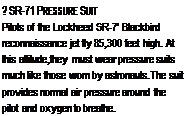

 HEN astronauts venture outside their spacecraft to explore or work In space, they must be well protected. Otherwise they would quickly die in the hostile environment of space. A space suit is the astronaut’s protection and life support system. Going outside the spacecraft is called an EVA (extravehicular activity). Wearing a space suit, the astronaut can survive up to 8 hours.
HEN astronauts venture outside their spacecraft to explore or work In space, they must be well protected. Otherwise they would quickly die in the hostile environment of space. A space suit is the astronaut’s protection and life support system. Going outside the spacecraft is called an EVA (extravehicular activity). Wearing a space suit, the astronaut can survive up to 8 hours.


 < EMU
< EMU


 ROL’GHOUT the 1920s and 1930s. pilots competed to set new distance records as well as endurance records—staving the longest time in the air. In 1923, a Fokker T-2 Army transport plane made the first nonstop flight across the United States. Army Air Service Lieutenants Oakley G. Kelly and John A. Macreadv piloted the T-2 Irom New York to San Diego. The trip took 26 hours and 50 minutes. Along the way, people listened eagerly tor the plane and watched lor it in the sky. When the T-2 landed, a huge crowd cheered the landmark flight.
ROL’GHOUT the 1920s and 1930s. pilots competed to set new distance records as well as endurance records—staving the longest time in the air. In 1923, a Fokker T-2 Army transport plane made the first nonstop flight across the United States. Army Air Service Lieutenants Oakley G. Kelly and John A. Macreadv piloted the T-2 Irom New York to San Diego. The trip took 26 hours and 50 minutes. Along the way, people listened eagerly tor the plane and watched lor it in the sky. When the T-2 landed, a huge crowd cheered the landmark flight.











 "Here all around me, и the Atlantic — its expanse, ltd depth, ltd power, і to wild and open water… If my plane ran о lay aloft, if my engine can keep on running, then so can I. ’
"Here all around me, и the Atlantic — its expanse, ltd depth, ltd power, і to wild and open water… If my plane ran о lay aloft, if my engine can keep on running, then so can I. ’

 Charles Lindbergh became the most famous aviator of his day. His courage, danng, and sheer endurance at achieving the solo flight won public admiration and acclaim. Lindbergh did much to inspire people’s faith in the airplane.
Charles Lindbergh became the most famous aviator of his day. His courage, danng, and sheer endurance at achieving the solo flight won public admiration and acclaim. Lindbergh did much to inspire people’s faith in the airplane.



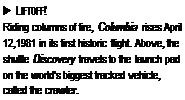 A Fast Exit
A Fast Exit In case of emergency before launch, the crew exit the shuttle in a slidewire basket. Shuttle Endeavour mission specialists practice the exit. As Michael Foale pulls a lever to release the basket, Claude Nicollier and John Grunsfeld watch.
In case of emergency before launch, the crew exit the shuttle in a slidewire basket. Shuttle Endeavour mission specialists practice the exit. As Michael Foale pulls a lever to release the basket, Claude Nicollier and John Grunsfeld watch.
 N amazingly complex machine, the space shuttle has over 600,000 different parts. Among its most important features is its tile heat shield.
N amazingly complex machine, the space shuttle has over 600,000 different parts. Among its most important features is its tile heat shield.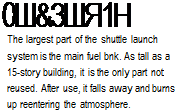









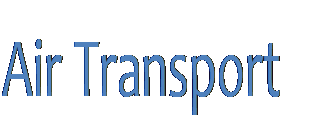

 RLY passenger flights of the 1920s were rough. Planes had no heat or air conditioning. They were not pressurized and usually could not fly over storms. They pitched and bucked in turbulence, and passengers were very airsick.
RLY passenger flights of the 1920s were rough. Planes had no heat or air conditioning. They were not pressurized and usually could not fly over storms. They pitched and bucked in turbulence, and passengers were very airsick. United Airlines stewardesses pose with a Boeing 247D. First serving as nurses, stewardesses later served meals and kept passengers safe and comfortable. These stewardess airline wings and identification badge are from the
United Airlines stewardesses pose with a Boeing 247D. First serving as nurses, stewardesses later served meals and kept passengers safe and comfortable. These stewardess airline wings and identification badge are from the Worldwide Travel
Worldwide Travel
 The Douglas DC-3 (above) became the world’s most successful airliner, flying cheaper, safer, and faster than competitors. Over 1,000 are still flying. By the 1930s, planes were taking people around the globe, as shown in these Museum advertisements.
The Douglas DC-3 (above) became the world’s most successful airliner, flying cheaper, safer, and faster than competitors. Over 1,000 are still flying. By the 1930s, planes were taking people around the globe, as shown in these Museum advertisements.


 Mission commander Dominic LGone sits at the controls of the shuttle Endeavour during a 1999 mission. The pilot’s seat is on his right. The shuttle can also be controlled by a sophisticated autopilot that can react thousands of times faster than a human.
Mission commander Dominic LGone sits at the controls of the shuttle Endeavour during a 1999 mission. The pilot’s seat is on his right. The shuttle can also be controlled by a sophisticated autopilot that can react thousands of times faster than a human.
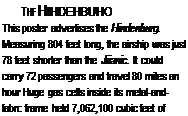 The Hindenburg, over 800 feet long, was the largest airship ever built. Passengers and crew occupied a small part ol the ship. ilost ol it was filled with gas cells that held hydrogen, the llammable gas that gave the ship its lilt. In 193/, the Hindenburg exploded and crashed. I he tragedy’ ended the age of passenger airships.
The Hindenburg, over 800 feet long, was the largest airship ever built. Passengers and crew occupied a small part ol the ship. ilost ol it was filled with gas cells that held hydrogen, the llammable gas that gave the ship its lilt. In 193/, the Hindenburg exploded and crashed. I he tragedy’ ended the age of passenger airships.


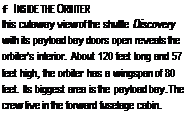
 Fun Fact: Big Load
Fun Fact: Big Load


 When a flying boat landed on water, it tied up di a mooring buoy or simply dropped its own anchor, like a ship.
When a flying boat landed on water, it tied up di a mooring buoy or simply dropped its own anchor, like a ship.


 ERY different from the flimsy biplanes of World War I, the fighter aircraft of World War II were tough, fast, and efficient. Aircraft had now become a primary means of waging war. Two nations, Germany and Japan, set out to dominate the world. In 1939, Nazi Germany began invading European countries. The German air force was called the Luftwaffe, or “air weapon.” Its Messerschmitt Bt 109 was a swift, fearsome fighter. More than 33,000 were produced.
ERY different from the flimsy biplanes of World War I, the fighter aircraft of World War II were tough, fast, and efficient. Aircraft had now become a primary means of waging war. Two nations, Germany and Japan, set out to dominate the world. In 1939, Nazi Germany began invading European countries. The German air force was called the Luftwaffe, or “air weapon.” Its Messerschmitt Bt 109 was a swift, fearsome fighter. More than 33,000 were produced.


 Wounded and dazed, pilot Quentin C. Aanenson poses with his P-47 Thunderbolt fighter plane, Topsy. Aanenson had just crash-landed on his base after being hit by "flak,"or antiaircraft fire, in a mission over Germany.
Wounded and dazed, pilot Quentin C. Aanenson poses with his P-47 Thunderbolt fighter plane, Topsy. Aanenson had just crash-landed on his base after being hit by "flak,"or antiaircraft fire, in a mission over Germany.



 ? ScRAMBLt!
? ScRAMBLt!

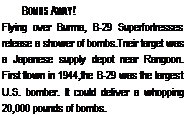

 Bombers attacked in huge fleets of up to a thousand to knock out enemy luel bases, arms supplies, and transportation lines. Never before had aircraft been used to destroy on such a large scale.
Bombers attacked in huge fleets of up to a thousand to knock out enemy luel bases, arms supplies, and transportation lines. Never before had aircraft been used to destroy on such a large scale.


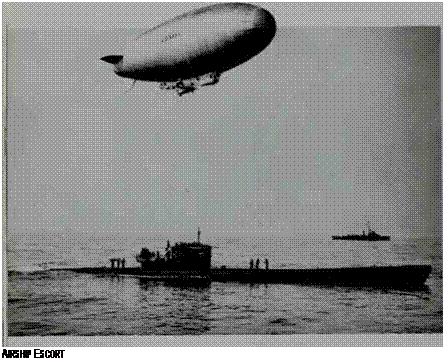
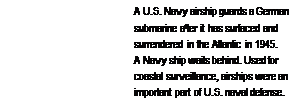
 In 1942, Japan launched an attack on Midway Island with four carriers. Navy dive bombers From three U. S. carriers surprised and attacked die Japanese fleet. They sank all four Japanese carriers. With the ships, Japan lost 250 planes and their most veteran pilots. This was a crippling blow that marked the turning point against Japan in the Pacific.
In 1942, Japan launched an attack on Midway Island with four carriers. Navy dive bombers From three U. S. carriers surprised and attacked die Japanese fleet. They sank all four Japanese carriers. With the ships, Japan lost 250 planes and their most veteran pilots. This was a crippling blow that marked the turning point against Japan in the Pacific.
